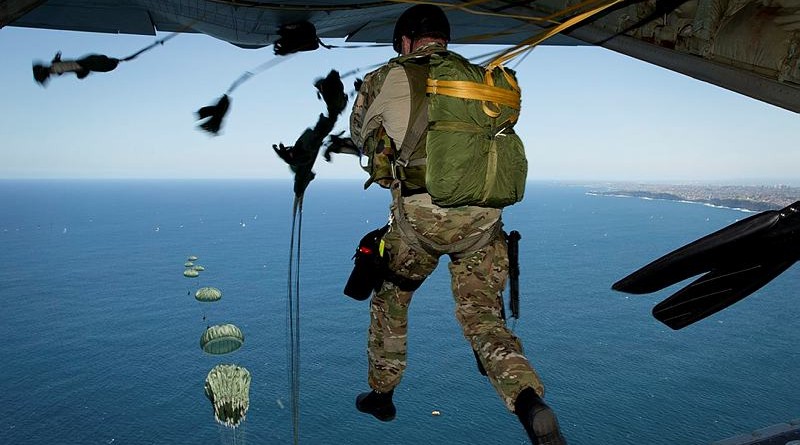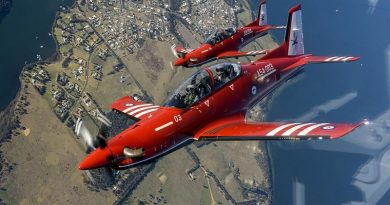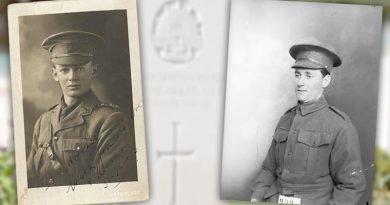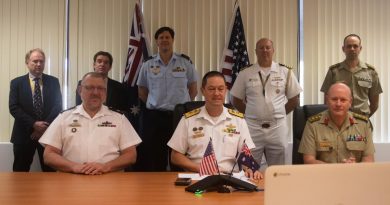Commandos storm Manly Beach

![]()
An Australian soldier from 1st Commando Regiment jumps from a Royal Australian Air Force C-130J Hercules aircraft during annual parachute certification off Manly Beach.
Parachute jumps were conducted on Saturday 5 and Sunday 6 December as part of Exercise Red Pegasus.
The training was conducted to ensure the regular and reserve personnel serving within 1st Commando Regiment maintained currency as part of their commando skill sets.
1st Commando Regiment’s role is to maintain and sustain collective and individual special forces, specialist personnel and special operations capabilities to conduct, command, support and reinforce special operations.
This training was enabled by Royal Australian Air Force C-130J Hercules aircraft and military watercraft.
1st Commando Regiment a combat units of the Australian Special Operations Command.
Australian Army commando regiments are trained and organised primarily as direct-action and raiding forces as well as quick-reaction forces for small teams.
1st Commando Regiment is an integrated unit comprised of regular and reserve soldiers with sub units in Sydney and Melbourne.
UPDATE:
(ALMOST) LAST JUMP FOR T10 PARACHUTE:
From ARMY Newspaper, 11 February 2016:
By Capt Megan McDermott
AFTER almost 40 years of service, the last-standing T10 parachutes used by paratroopers and Special Ops personnel around the world have retired.
The chutes require paratroopers hooking onto a strong point in the aircraft before jumping from altitudes between 800-1000ft. Soldiers from 1 Cdo Regt used the chutes for the last time while conducting their annual currency jump.
WO2 R, of the Parachute Training School, said the Army’s T10 series static line parachutes had served the Army well since their first operational service on loan from the US during Operation Stirling in the Vietnam War.
“In 1969, soldiers from 3 Sqn, SASR, conducted an airborne insertion into Phuoc Tuy, South Vietnam, using 100 US-loaned T10 parachutes,” WO2 R said.
The T10s were formally inducted into the Australian Army in 1976 and have been used by SASR, 1 and 2 Cdo Regiments, 4RAR, 3RAR and the Parachute Training School. In 1995, the chutes were employed for the largest Australian parachute descent into the Northern Territory as part of Exercise Kangaroo. This was a complete Parachute Battalion Group (PBG) insertion conducted by 3RAR.
The T10s have been superseded by the T11 series.
“The T11 gives the soldier a slower rate of descent to reduce the risk of injury whilst wearing more equipment of the modern day soldier,” WO2 R said.
The T10 was parabolic in shape and had a 10.6m diameter, comprising 30 suspension lines and a load capacity of 164kg. It had a rate of descent of 4.6 to 6.7m a second.
In contrast, the T11 is a cruciform platform design with a flying diameter of 8.7m and can carry 181kg. The T11s have fewer suspension lines (28), and a rate of descent of 4.4 to 5.6m a second.
WO2 R said the final T10s would be converted for equipment or stores drops of up to 227kg.
.
.

.
.







cool. looks like nothing has changed, good to see